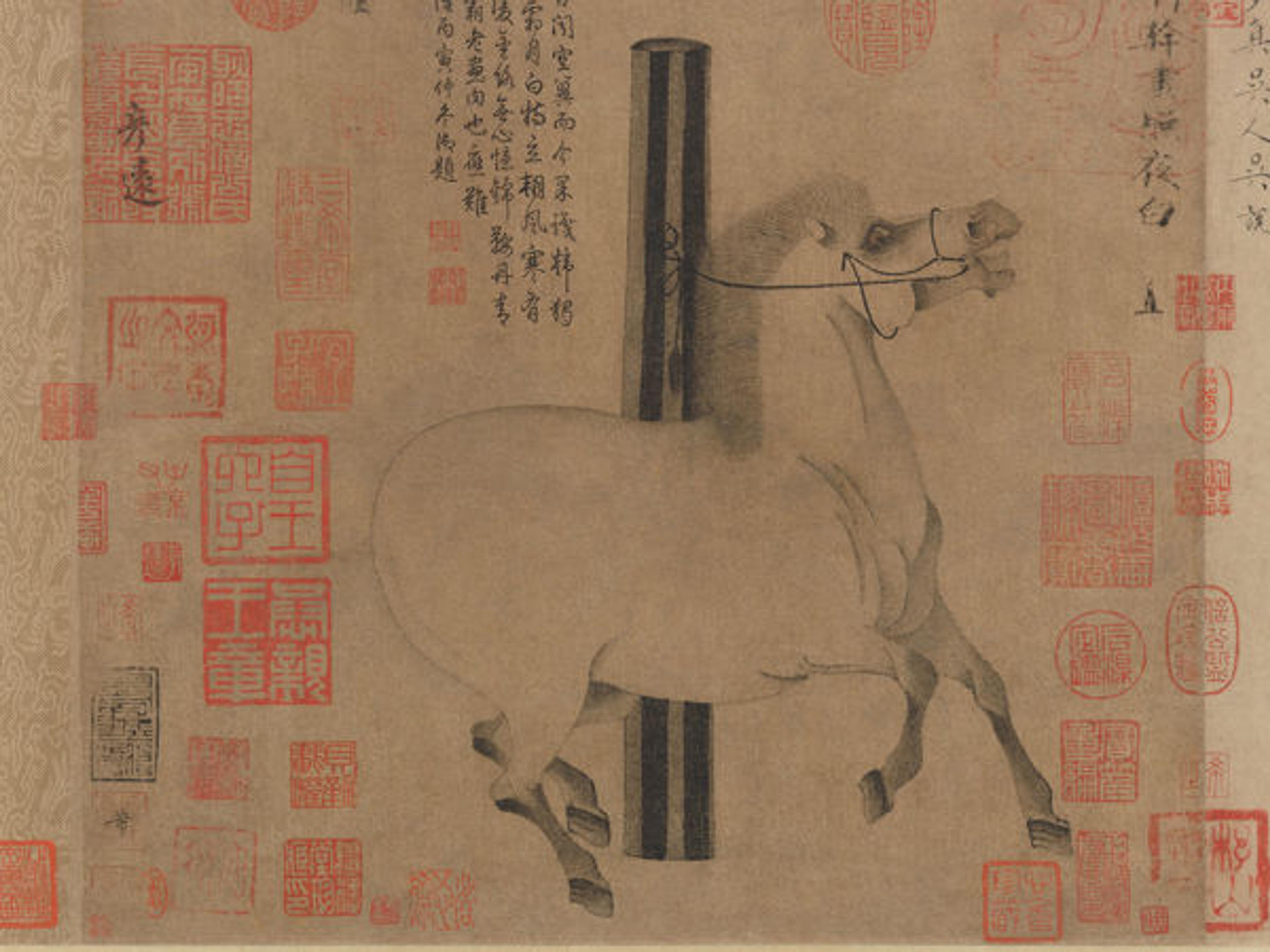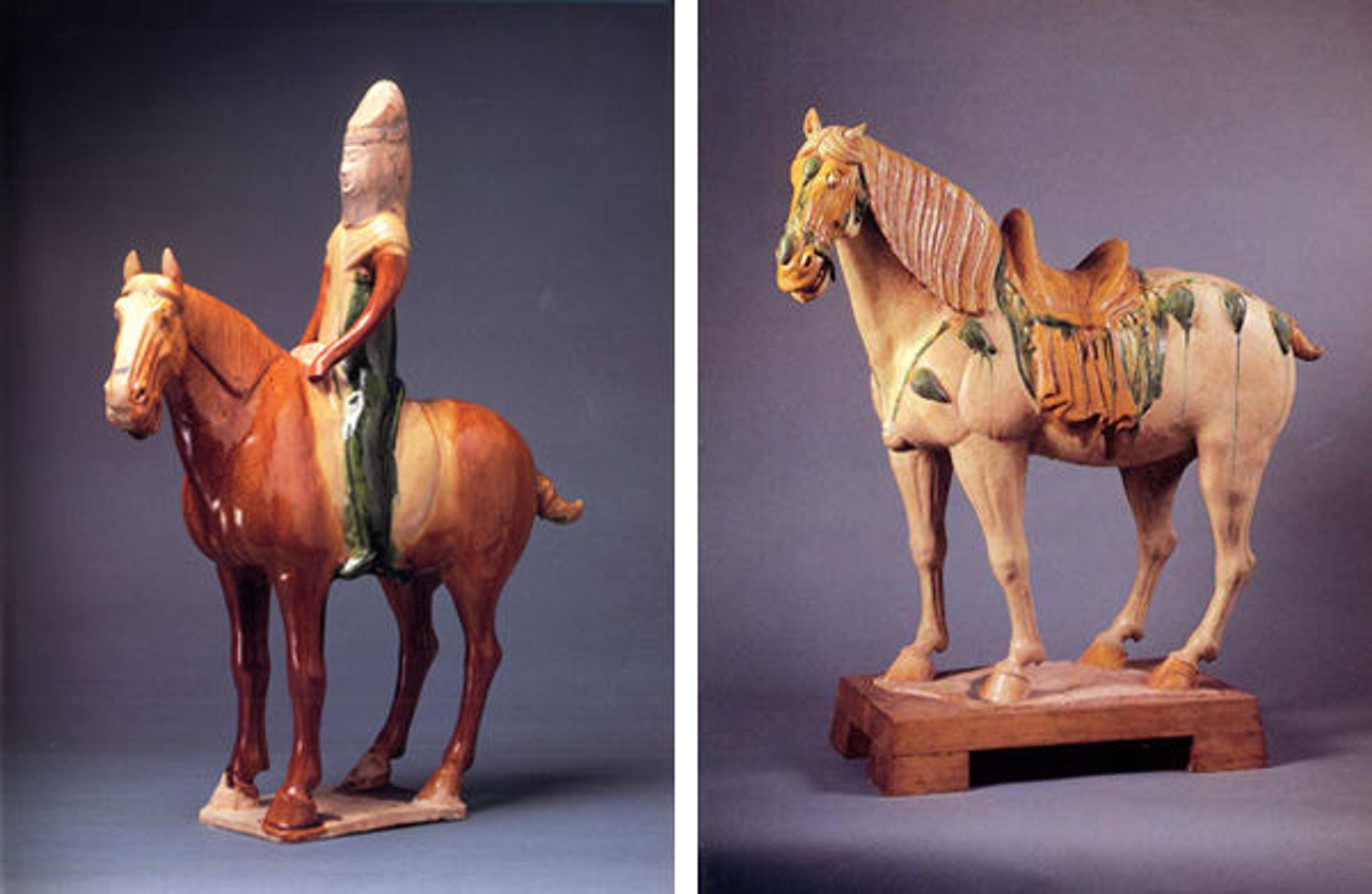
Han Gan (active ca. 742–756). Night-Shining White. Tang dynasty (618–907), ca. 750. Handscroll; ink on paper. The Metropolitan Museum of Art, New York, Purchase, The Dillon Fund Gift, 1977 (1977.78)
«To celebrate the Year of the Horse, the Metropolitan Museum is presenting a selection of exceptional works in Gallery 207 for a limited period.
Since its domestication in prehistoric times, the horse has played an essential role in Chinese life. During the Shang and Zhou dynasties (ca. 1600–256 B.C.) horse-drawn chariots were a sign of high social status and the premier weapon of war. By the fourth century B.C., increasing encounters with nomadic horsemen led to the adoption of mounted cavalry as a dominant force in the battles between rival states that culminated with the unification of the country and establishment of the first Chinese empire—the Qin dynasty (221–206 B.C.).»
In the first century B.C., when Chinese envoys brought the first Bactrian horses back from western Asia to the Han dynasty (206 B.C.–A.D. 220) capital, these tall, strong, noble-looking steeds immediately caught the imagination of the emperor and his court. These "heavenly horses" were associated with dragons, animals capable of carrying humans to the land of the immortals. The importance of horses rose to new heights in the Tang dynasty (618–907) when, as emblems of imperial power, they marched in state processions, galloped through royal hunting parks, raced across polo fields, and even danced before the emperor. Their portraits were painted by leading court artists, and their majestic form was modeled in brightly glazed pottery as tomb figurines and sculpted on marble plaques to adorn emperors' tombs as symbols of dynastic vitality.

Horse and Female Rider (left) and Figure of a Horse (right). Both: Tang dynasty (618–907), late 7th–first half of the 8th century. Earthenware with three-color (sancai) glaze and pigment. The Metropolitan Museum of Art, New York, Gift of Stanley Herzman, in memory of Adele Herzman, 1991 (1991.253.10; 1991.253.12)
The horse remained an icon of state authority through the Manchu Qing dynasty (1644–1911) and even today horse imagery carries many positive associations. As one of the zodiac animals of the lunar calendar, it symbolizes power, strength, and vigor, and is expected to bring prosperity and success in the year that bears its name.
Happy New Year! 恭賀新年!